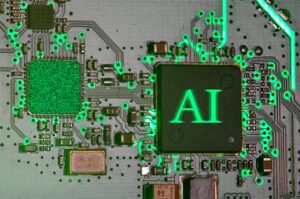Tokenization, context, and comprehension are the building blocks of the new language of machines.

Tokenization, context, and comprehension are the building blocks of the new language of machines.
A hidden structure, a new sort of digital language that machines employ to decipher human thought, is that which lies behind every intelligent conversation that is carried out by artificial intelligence. Most people have the impression that dealing with AI is straightforward: they simply write a message, and it responds. Nevertheless, beneath the surface, there are intricate systems that change English into something that machines can comprehend and reason with. These mechanisms are known as tokenization, context modeling, and semantic understanding.
This invisible process is not simply about parsing words; rather, it is about educating machines to think in linguistic units that bridge the gap between human meaning and computational logic. Being able to comprehend how this operates reveals the true intelligence that is beneath contemporary AI models.
Tokenization: What Does It Mean?
The process of tokenization involves breaking down language into smaller, more manageable chunks that are referred to as tokens. These tokens are then able to be processed by a machine. These tokens are capable of representing anything, whether a single character, an entire word, or even a part of a subword.
By way of illustration, the sentence:
- “The potential of artificial intelligence is absolutely astounding.”
might be tokenized as follows: [“The,” “future,” “of,” “artificial intelligence,” “is,” “astonishing,” “ishing,” “.”] - Every single token is converted into a numerical representation that the model is able to comprehend it. With this structure, artificial intelligences are able to handle languages with a wide variety of grammar, spelling, and syntax, even if the words they learn are uncommon or have not been seen before.
- To put it succinctly, tokenization is the process by which artificial intelligence learns to read, one fragment at a time.
Why the Use of Tokens Is Important
Although tokenization may appear to be a mechanical process at first appearance, it actually plays a significant role in the way that models understand meaning. AI systems are able to segment language when they:
- Be able to identify patterns both within and between words.
- Take effective control of input in multiple languages.
- Reduce the size of your vocabulary to improve your performance.
- Handle terms that are considered to be innovative or invented, such as slang or brand names.
- AI would be unable to cope with the sheer complexity of human language if tokenization were not included. Tokens are a means of consolidating disorder into structure, so laying the groundwork for comprehension.
What Happens When Meaning Is Created: From Tokens to Context
After text has been tokenized, the model needs to figure out how the tokens are related to one another. The context is essential; the word “bank” can indicate one thing near the word “river” and another near the word “money.”
In order to accomplish this, artificial intelligence models make use of attention processes, which enable them to dynamically evaluate the links between tokens. Not like humans, they do not comprehend phrases in a sequential order; rather, they examine all of the possible connections at the same time.
The technology that underpins models such as GPT is housed within this fundamental component of the Transformer architecture. Not only does it scan text, but it also constructs a map of meaning in which each token influences others based on how relevant they are on the map.
What Function Do Context Windows Serve?
A context window defines the amount of information that an artificial intelligence model is able to store in its working memory. The number of tokens required for smaller models might be as low as a few hundred, while for larger models, the number could reach into the hundreds of thousands.
Within the confines of that window, the model monitors everything you’ve typed, including prior queries, instructions, and even tone, in order to generate responses that are consistent and pertinent. Older information eventually disappears as the window fills up, in a manner that is analogous to how individuals forget specifics over the course of time.
The degree to which a model is “aware” of information from the past is proportional to the size of the context window it uses. This window has been expanded, which has been one of the most important advances in the advancement of AI comprehension.
Beyond Pattern Recognition: Comprehension and Understanding
Sceptics have maintained for years that artificial intelligence does not actually comprehend language; rather, it merely imitates patterns. But contemporary architectural designs are calling that notion into question.
The development of emergent abilities, which are capabilities that emerge spontaneously from scale and structure, has been accomplished by artificial intelligence systems through large training on text from books, articles, dialogues, and code. Reasoning, summarization, and even analogous cognition are all examples of these types of thinking.
robots are capable of functional understanding, which is the ability to decipher meaning, infer intent, and respond correctly. However, robots do not have the capacity to comprehend emotions or awareness in the same way that humans do.
The mathematics of meaning is referred to as semantic embeddings.
Internally, artificial intelligence algorithms encode tokens as embeddings, which are vectors in high-dimensional space that capture meaning based on relationships between entities.
This area contains:
- “King” and “Queen” are extremely near to one another.
- Both “Car” and “Bus” have a directionality that is comparable.
- The words “Cat” and “Dog” belong to a distinct cluster than the words “Table” and “Chair.”
- These embeddings make it possible for artificial intelligence to do astonishing feats, such as contextual rewriting (in which the word “doctor” can be changed to “physician” depending on the style) or analogical reasoning (in which Paris is to France as Tokyo is to Japan).
- Semantics is transformed into geometry through the use of embeddings, and meaning is made measurable.
The Influence of Context on the Understanding of Machines
The interpretation of meaning by machines is not based on intuition but rather on probabilistic association. Whenever you pose a question to an artificial intelligence, it determines the sequence of tokens that is most likely to follow, taking into account the context.
Just one example:
- “The sun rises in the the” is the input.
- What is most likely to follow: “east.”
- However, if there was more context, for example in a poetic conversation, it might have produced the phrase “heart of dawn” instead. Language is not the determining factor in interpretation; context is.
- Conversational artificial intelligence is able to alter itself dynamically based on previous interactions, which is reason why it feels natural.
Confronting the Obstacle of Ambiguity
Implicit connotations, such as irony, metaphor, cultural references, and multiple meanings, are essential to the development of human language. When it comes to artificial intelligence, these components are challenging since they rely on collective experience rather than explicit language.
If someone were to say, “Nice job crashing the system,” for example, the message may be taken in a literal sense or it could be mocking. Even though tokenization and context are helpful in narrowing down the choices, true comprehension is still dependent on subtle clues that even humans cannot always pick up on.
In order to comprehend meaning with a greater degree of nuance, future models are being trained not only on text but also on multimodal input, which combines vision, sound, and speech.
Building Bridges Between Global Languages Through Multilingual Tokenization
Tokenization also makes it possible for artificial intelligence systems to work across languages. Models are able to handle many languages since tokens represent statistical units rather than fixed words. This allows the models to operate inside a single framework.
For instance, the Japanese phrase “ありがとう” (which translates to “thank you”) and the English word “thanks” could have same vector coordinates in the embedding space. This makes it possible for multilingual artificial intelligences to transfer knowledge between languages, which improves translation and comprehension between different cultures.
In the process of tokenization, compression and efficiency
The importance of tokenization efficiency increases as the number of context windows increases. In order to intelligently compress text, modern tokenizers make use of sentencepiece techniques or byte-pair encoding (BPE). This allows them to strike a compromise between granularity and compactness.
Having efficient tokenization means that inferences are made more quickly, that computational costs are reduced, and that there is a greater alignment between language patterns and the capacity of machine learning.
Comprehension of Machines: An Evolutionary Perspective
The progression of artificial intelligence itself is mirrored in the path from token to meaning. Conventional rules and vocabularies were the foundation of early systems. Models of today learn language by statistical analysis, constantly adapting to the context and the aim of the language.
This development signifies a transition from symbolic artificial intelligence to neural AI, or from logic that is programmed to reasoning that is taught. It is no longer the case that machines are creating a sort of conceptual knowledge that is rooted in data-driven experience; rather, they are no longer learning grammar.
Implications for Ethical and Cognitive Behavior
As machines become more capable of comprehending language, ethical problems are raised, including the following:
- Should artificial intelligence models be able to replicate empathy and emotion?
- How do we make sure that they interpret the context in a responsible and safe manner?
- What happens when representations of human language that are tokenized reflect prejudices or misinformation instead of the truth?
- As a result of the fact that AI comprehension is a reflection of its training material, every token that it learns bears cultural significance.
- Tokenization systems that are both fair and aware of their context are therefore vital for the development of ethical artificial intelligence.
Future Prospects: The Path Towards Genuine Semantic Intelligence
Moving beyond contextual prediction and into conceptual thinking is the goal of the next generation of artificial intelligence algorithms. Rather than only guessing the next token, students will comprehend the reasons why it is appropriate, so establishing a connection between information spanning several modalities, reasoning chains, and abstract domains.
Emerging research in neuro-symbolic systems aims to combine statistical learning with logical reasoning in order to endow robots with not just linguistic fluency but also cognitive depth.
Tokenization, context, and comprehension are the three components that make up the unconscious language of artificial intelligence, which can be thought of as the digital equivalent of human mind. Machines are able to learn to comprehend, reason, and communicate in ways that are increasingly similar to human own knowledge thanks to these techniques.
However, the magic has not been found in imitation but rather in transformation: people have taught computers language, and now machines are teaching us new ways to perceive language itself.
The new language of machines is not written in words but rather in tokens, vectors, and probabilities. It is a bridge between data and meaning that describes the current state of the technological frontier in terms of intelligence.




